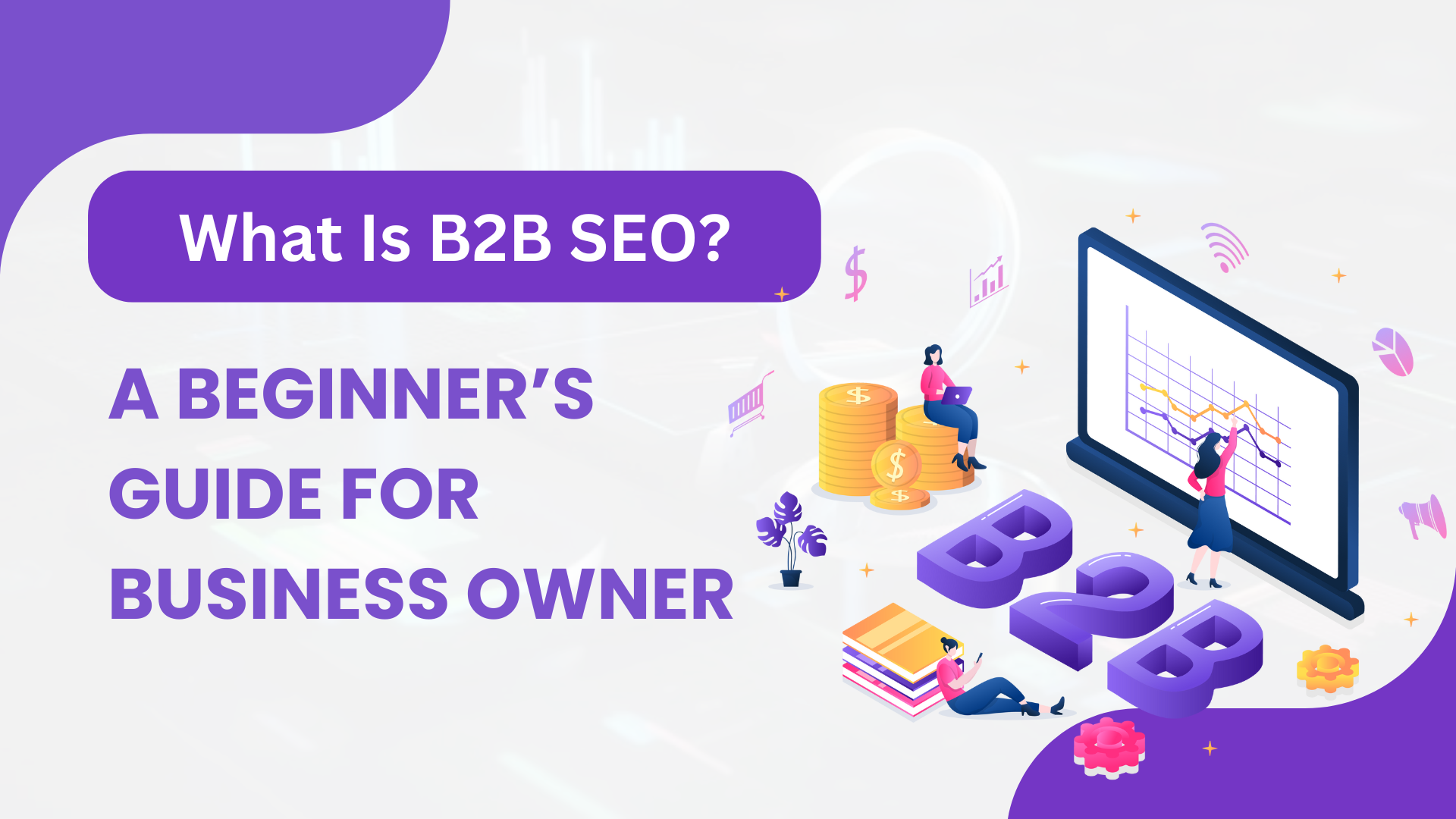What Is B2B SEO? A Beginner’s Guide for Business Owners
If you operate in the business-to-business (B2B) sector, your potential clients are likely searching online for the services or products you offer. But if your business doesn’t appear on Google, you’re missing out on valuable leads. That’s where B2B SEO comes in.
In this beginner-friendly guide, we’ll explain what B2B SEO is, how it differs from B2C SEO, and why it’s essential for long-term business growth. We'll also show you how it fits into a wider B2B digital strategy, especially when paired with platforms like LinkedIn and smart content planning.
What Does B2B SEO Mean?
B2B SEO (Business-to-Business Search Engine Optimisation) refers to the process of improving your website’s visibility in search engines to attract decision-makers at other businesses.
This could include:
Marketing managers looking for digital agencies
Procurement officers sourcing wholesale products
CEOs researching software providers
Restaurant owners searching for food distributors
The aim is to appear prominently on search engines when these professionals search for relevant terms, such as “CRM software for SMEs” or “best wholesale drink supplier UK.”
Why Is B2B SEO Important?
In the B2B space, clients rarely make decisions on impulse. They research. They compare. They look for expertise and credibility. B2B SEO helps you:
Get found organically by businesses already searching for your offer
Attract high-intent leads without spending heavily on ads
Build long-term authority in your industry
Support your sales funnel with helpful, informative content
When paired with paid strategies like LinkedIn Ads, SEO can significantly increase brand awareness and trust.
Key Elements of B2B SEO
Let’s break down the core components of a strong B2B SEO strategy.
1. Keyword Research Focused on Decision-Makers
Unlike B2C SEO, where keywords might be simple (e.g. “cheap trainers”), B2B searches are more specific and niche.
Examples include:
“IT support services for law firms”
“Eco-friendly packaging supplier for ecommerce”
“LinkedIn content strategy for B2B brands”
Use tools like Google Keyword Planner, Ubersuggest, or Ahrefs to find keywords with high intent, even if the search volume is lower.
2. Content That Informs and Converts
Your content should educate, solve problems, and help buyers move through the decision-making process. Focus on:
Blog posts that answer industry-specific queries
Case studies showcasing your results
Service pages optimised with keywords
Whitepapers and downloadable resources
You can see a great example of this approach in Teqnoor’s recent post on how LinkedIn Ads can work for your B2B strategy, which educates the reader while showcasing the service offering.
3. On-Page SEO Best Practices
Make sure every page on your site is fully optimised. Key tasks include:
Clear H1 and H2 tags
SEO-friendly URLs
Meta titles and descriptions
Internal linking (like we're doing here)
Mobile responsiveness
Image alt text
All of these improve your search rankings and user experience.
4. Technical SEO for a Smooth User Journey
Technical SEO ensures your website is easy for Google to crawl and index. This includes:
Fast loading speed
Secure HTTPS protocol
Clean URL structure
Sitemap submission
No broken links
If you want to see this in action, explore how Teqnoor structures its B2B services with clean, keyword-optimised pages built for performance.
5. Link Building and Authority
Backlinks — links from other trustworthy websites to yours — are still one of Google’s top ranking factors.
Build backlinks by:
Writing guest posts for industry blogs
Getting listed in business directories
Collaborating with clients on joint content
Earning press mentions or testimonials
Over time, this helps Google see your site as a reliable source of information.
B2B SEO vs B2C SEO: Key Differences
| Feature | B2B SEO | B2C SEO |
|---|---|---|
| Audience | Business decision-makers | Everyday consumers |
| Search Intent | Problem-solving, research-focused | Price-based, quick purchases |
| Sales Cycle | Longer, often involves multiple stakeholders | Shorter, individual decisions |
| Content | In-depth, value-driven | Engaging, emotional appeals |
| Conversion Goals | Demo bookings, quote requests, enquiries | Direct sales, sign-ups |
How B2B SEO Supports Your Overall Strategy
B2B SEO doesn’t work in isolation. It complements your broader digital presence. For instance:
An optimised blog post can attract organic traffic
A strong landing page helps convert that traffic
A remarketing campaign on LinkedIn keeps your brand top-of-mind
A service page like Teqnoor’s B2B solutions can capture and convert leads who are ready to take action
If you’re already investing in platforms like LinkedIn, combining organic and paid channels can dramatically improve results. Learn more in this blog: How LinkedIn Ads Can Work for Your B2B Strategy.
Final Thoughts
B2B SEO is more than just ranking on Google — it’s about being visible, credible, and helpful at every stage of your customer’s journey.
By investing in keyword research, helpful content, technical optimisation, and strategic internal linking, you can turn your website into a lead-generating machine.
And if you’re looking for support with B2B SEO, Teqnoor offers tailored services that help business owners like you attract the right audience and grow sustainably.


